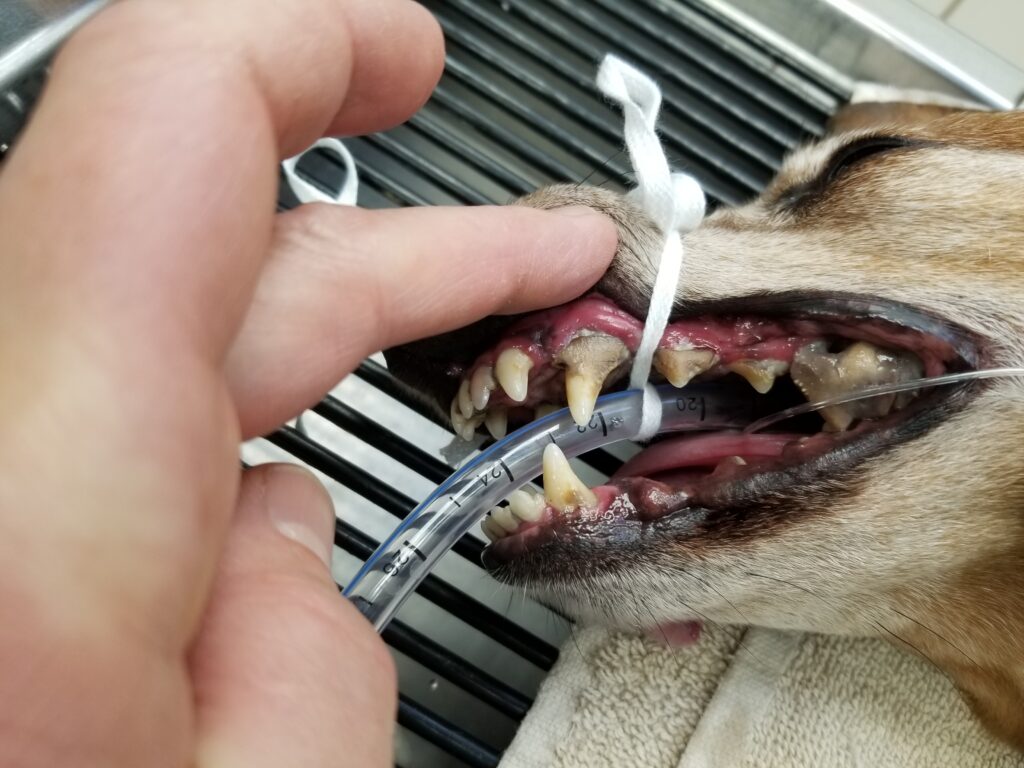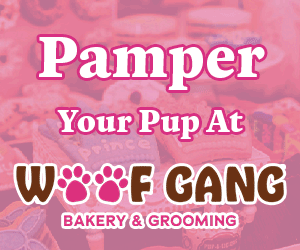Oral disease is the most common affliction of dogs. Most dogs over the age of three years have some level of gingivitis or periodontal disease, which can lead to even more serious health concerns. Yet, most pet caregivers pay very little attention to their animal’s mouth. Sure, we notice the “dog breath,” but when was the last time you really looked at your pet’s teeth.
Go ahead right now, flip up the lip of your dog or cat and take a peek at those pearly whites way in the back. Do you see that brown stuff stuck on the teeth? (Don’t bother trying, you can’t brush it off). Maybe you can even notice that the edges of the gums are red. That means that your pet has gingivitis (infection of the gums).
The process of oral disease is insidious. Bacteria in the mouth naturally coat the surface of the teeth forming plaque. Over time the bacteria incorporate minerals and develop into thick, brown tartar. Eventually the bacteria work their way under the gum line causing gingivitis. If left untreated, the bacteria dive deeper into the tissues surrounding the tooth root resulting in periodontal disease and tooth root infections.
Once the bacteria are under the gum line they gain access to the blood, possibly leading to infection in the heart and other major organs. Research shows that periodontal disease is linked to heart disease and an increase in systemic inflammation in dogs.
At the stage of tartar and gingivitis, the pet needs to have her teeth cleaned by a veterinarian. Because animals do not rinse and spit the way we do, dental work requires general anesthesia. Many times, extractions are needed. The whole ordeal can get expensive and is not without risk. Obviously, prevention is the best course of action.
Many pet caregivers, and even some veterinarians, believe that kibble cleans a pet’s teeth. The truth is that dry pet food does nothing to scrape the plaque and tartar off the teeth. As soon as the tips of the teeth contact the kibble, the nugget crumbles. Thinking that chewing dry pet food cleans a pet’s teeth is like believing that chewing on pretzels keeps our teeth clean – no brushing necessary.
Another thing to consider is that that all dry pet food is high in starch (even grain-free kibble). Since starch readily breaks down into sugar that feeds bacteria, I believe that dry pet food is a major contributor to the pet dental disease epidemic.
Raw pet food in general is low in starch so less likely to promote the growth of bad bacteria in the mouth. But I must admit that there is no substitute for mechanical scraping of the teeth to keep plaque and tartar at bay. The ancestors of our pets kept their teeth clean by chewing on bones. While some bones are dangerous for pets to chew, there are safe chew treats that can help keep a dog’s teeth cleaned.
Keep in mind that dogs and cats only chew with their premolars and molars (the teeth behind the fangs). So, even if you get your pet chomping on great dental chews, there is still a need for brushing the teeth. This is a habit that needs to be done daily to be effective. Having the groomer brush Fido’s teeth every 6 weeks is not going to help much at all. Your veterinarian will be able to recommend the proper toothbrush and paste for your pet.
Keeping your pet’s mouth healthy is one of the most important ways you can positively influence her overall health. I have seen many older animals perk up after getting their teeth cleaned and the bad ones pulled. I can tell you that Jack felt like a new dog after his dental work.



